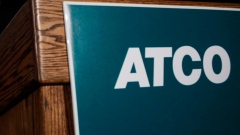Jul 12, 2023
Bank of Canada deploying forecast 'fiction,' Scotiabank economist says
, Bloomberg News
BoC likely looking at data points for evidence of economic softening
The Bank of Canada is using its economic forecasts to try to prevent medium-term rates from falling too much and stoking more housing market speculation, according to a top economist.
Derek Holt, head of capital markets economics at Bank of Nova Scotia, described Governor Tiff Macklem’s tactics as “stealth forward guidance” after the central bank raised its benchmark rate to a 22-year high of 5 per cent on Wednesday.
The decision was accompanied by a new set of economic projections that see the economy headed for a soft landing, with growth averaging about 1 per cent over the next 12 months. Output is then expected to pick up again, to 2.5 per cent in 2025, while inflation eases over the next two years until it’s back at the bank’s 2 per cent target.
To Holt, that forecast “deserves a place on the fiction shelves at your favorite bookstore or the virtual equivalent.”
In a report to investors Wednesday afternoon, the Scotiabank economist acknowledged the “slim possibility” the forecasts may prove right and that Macklem and his team may genuinely believe them. But he argued there’s another motive potentially at play: Central bank officials want to avoid speculation about rate cuts and a rally in five-year government of Canada debt.
Most mortgages in Canada are fixed-rate loans tied to five-year government notes. When their yields fall, so do borrowing costs for homeowners, and the central bank wants to avoid that outcome, Holt said.
“They’re trying to exert their influence further up the curve by producing a set of forecasts that pushes back against any tendency to more dearly price those bonds because it would mean lower fixed mortgage rates,” he wrote.
That, in turn, “would mean more fuel thrown onto the housing fires in the country alongside stronger consumption,” he wrote.
Soon after the Bank of Canada declared a conditional pause in January, home prices started to rebound.
Holt concluded: “If I’m right, then this stealth guidance tool means that should markets resume testing the BoC before it is ready, then markets may court the risk that the hammer gets pulled out again with another policy rate hike to prove the point.”







